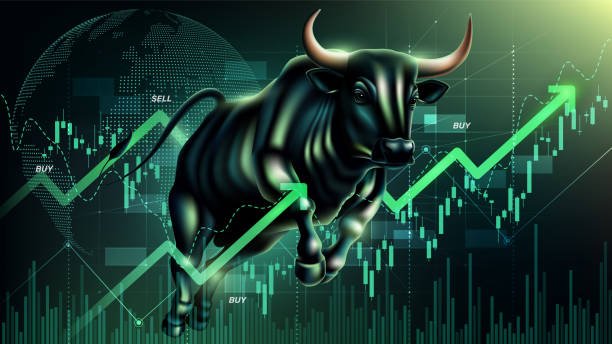The cryptocurrency market is characterized by two main seasons, including bull and bear market seasons. To be better positioned for gains or profitably navigate the cryptocurrency market, one must have a good understanding of these cycles.
Thus, this article discusses what crypto bull market means, highlighting five (5) proven strategies for profitably navigating bull market seasons.
What is crypto bull market?
Crypto bull market simply refers to a season or period where prices of crypto assets maintain a consistent and sustainable upward trajectory.
In other words, it is the season in the crypto market where investors and traders are highly optimistic about the growth of crypto assets such that they are willing to buy crypto assets even at high prices.
Moreover, the crypto bull market denotes a moment in the cryptocurrency space where positive sentiments are usually on the high side, with more individuals and institutions showing interest and investing in the sector.
Thus, crypto bull market seasons are often characterized by high liquidity or money flow into the crypto market, elevated positive sentiments, increased crypto adoption and investor interest in crypto assets such as bitcoin (BTC), ether (ETH), XRP (XRP) and Hive (HIVE) amongst tens of thousands of other cryptocurrencies.
What factors lead to crypto bull markets?
Several factors often precede or contribute to the emergence of crypto bull markets.
- Bitcoin halving
One such factor is bitcoin halving, a pre-programmed event that occurs on the Bitcoin network after every four years.
As the name implies, bitcoin halving is a protocol-driven phenomenon that results in the halving (or 50% reduction) of miners’ block rewards. Block rewards refers to payments given to miners for validating transactions on the Bitcoin network.
In 2009 when the genesis block of bitcoin was mined, block rewards stood at 50 BTC. However, after the first bitcoin halving event in 2012, block rewards were reduced to 25 BTC. The second halving, which occured in 2016 saw miners' block rewards drop 12.5 BTC. In 2020, the third halving event took place, reducing miners' rewards to 6.25 BTC. April 2024 brought about the fourth bitcoin halving event, further reducing miners' rewards to 3.125 BTC per block. Accordingly, block rewards will continue to drop after every four years.
Historically, every halving event always leads to a crypto bull market. This is because bitcoin halving increases mining difficulty, which is the rate at which new bitcoins are brought into circulation. By reducing BTC's supply rate, demand is in turn increased for the largest cryptocurrency by market capitalization.
Based on the demand and supply laws, it becomes natural for the price of BTC to surge. Moreover, because bitcoin dominance is high in the crypto market, its surge often causes a ripple effect on alternative coins (altcoins), resulting in the broader crypto market being green.
- Positive macroeconomic factors
Another factor that fuels crypto bull markets is positive macroeconomic factors. Notably, macroeconomic factors include unemployment, inflation, gross domestic product (GDP), fiscal policy, interest rates, commodity prices, global economy trends, etc.
When the unemployment rate stays low, consumer spending tends to increase which can positively impact the crypto market. Likewise, rising inflation often results in a decline in the purchasing power of fiat currencies such as USD and GBP thereby, making crypto assets like BTC a more attractive store of value.
Similarly, improving global economies can lead to increased adoption and demand for digital assets. On the flip side, degrading global economies often results in reduced crypto adoption.
While higher interest rates can make crypto assets less attractive compared to traditional assets, lower interest rates can make crypto assets more appealing to investors.
Speaking of policies, fiscal or government spending and taxation policies can affect the cryptocurrency market negatively. Monetary policy, which entails the decisions of central banks on money supply, can also fuel crypto bull markets.
- Positive political shifts and clear regulations
The political regime is another key factor that influences the crypto market. Where there are clear regulations and positive political shifts, the crypto market tends to thrive. But where there are tight rules, regulation by enforcement, bans etc, it can impact the crypto market negatively.
For instance, since the emergence of Donald Trump as the 47th president of the United States of America, the crypto market has flourished given Trump's pro-crypto stance and promises to usher in clear regulations and policies that would encourage innovations in the space rather than stifle them.
- Institutional adoption
The adoption of crypto by institutions also plays a great role in the crypto market entering bullish seasons. With more institutions entering the scene, money inflows and liquidity is bound to increase in the crypto market which can fuel bull markets.
Notably, Michael Saylor's MicroStrategy is the largest-known institutional holder of bitcoin, with over 200,000 BTC in its balance sheet. Leading global asset managers, including BlackRock, VanEck, Fidelity, 21Shares, Bitwise, Franklin Templeton and many others have also embraced crypto, launching their respective spot bitcoin exchange-traded fund (ETF) in January 2024.
Final thoughts
Crypto bull markets can last for months, years or even decades depending on the prevailing macroeconomic and market factors. While it's impossible to accurately predict the end of a crypto bull market, it is wise to trade with caution. This entails trading with moderate leverage levels, investing in quality projects, having short-term, mid-term, long-term bags, ensuring your portfolio is properly diversified as well as taking profits when you should, and perhaps save them in stablecoins to evade unwanted value volatility.
Image credit: Pixabay
Posted Using INLEO